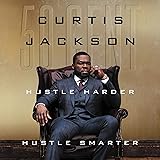Navigating the complexities of investment can often feel daunting. Many investors grapple with the optimal allocation of capital. Fortunately, insights from legendary figures like Warren Buffett offer a clear path. The accompanying video delves into some core tenets of the Warren Buffett investment strategy. This article expands upon these principles. It offers deeper context for achieving lasting financial success.
Mastering the Warren Buffett Investment Strategy: Beyond Conventional Wisdom
A robust investment philosophy is paramount. It guides decisions amidst market volatility. Warren Buffett’s approach emphasizes long-term value creation. His principles are applied across diverse market conditions. These strategies are particularly relevant today.
Cultivating Human Capital: Your Foremost Investment
One might often consider stocks or real estate as primary investments. However, Buffett highlights a different initial priority. Investing in oneself represents the most prudent allocation. This includes anything that enhances personal talents. Such an asset cannot be seized. It remains secure against economic downturns.
Consider the power of improved communication. Buffett famously invested $100 in a Dale Carnegie course. He deemed it as valuable as a college degree. This enhanced skill amplified his capabilities. It is a non-depreciating asset. Personal growth yields exponential returns.
Imagine if your expertise consistently grew. Your value to the market would similarly increase. This internal capital becomes a formidable advantage. It is a cornerstone of true wealth building.
Rethinking Cash: A Strategic Reserve, Not a Destination
Conventional wisdom sometimes praises cash. The phrase “cash is king” is frequently heard. Buffett, however, offers a contrasting view. He asserts that cash generally proves a poor investment. Its value depreciates over time due to inflation. Holding excessive cash represents missed opportunities.
Nevertheless, liquidity holds importance. Enough cash must be maintained. It ensures operational stability, much like oxygen. Berkshire Hathaway, for example, always ensures sufficient reserves. Yet, surplus cash causes discontent. Deploying capital into productive assets is preferred.
Recently, Berkshire Hathaway shifted over $40 billion. This substantial cash hoard was reduced. Approximately $20 billion was subsequently deployed. This action illustrates an active capital management approach. Optimal resource allocation is a core tenet.
Navigating Currency Depreciation: The Inevitable Erosion of Value
The dollar’s purchasing power slowly erodes. This is a fundamental economic reality. Almost all currencies experience depreciation. The question becomes one of degree, not occurrence. Investors must protect their wealth.
All productive assets offer a hedge. They insulate against currency devaluation. Owning tangible businesses is key. Their intrinsic value often grows. This growth surpasses inflationary pressures.
Imagine your wealth held solely in cash. Its future purchasing power is diminished. However, ownership in thriving enterprises provides stability. Real assets deliver enduring value.
Gold vs. Productive Assets: A Clear Distinction in Investment Philosophy
Gold is frequently proposed as an inflation hedge. Buffett presents a compelling counter-argument. He prefers businesses that generate value. The sheer scale of global gold holdings is illustrative.
All the world’s gold forms a 67-foot cube. This massive block is worth roughly $7 trillion. That sum represents one-third of all U.S. stock values. Consider the alternatives this capital could acquire.
For $7 trillion, one could purchase extensive farmland. Approximately one billion acres of U.S. farmland are valued at $2.5 trillion. This covers about half of the continental United States. Additionally, seven ExxonMobils could be acquired. A trillion dollars would remain as walking-around money.
Contrast these productive assets with gold. Gold simply “shines there.” It generates no income or growth. Productive assets like farmland or corporations create immense value. They produce goods, services, and earnings. This fundamental difference underscores a critical investment lesson.
The Art of Valuation: Prioritizing Business Over Price
Identifying value requires disciplined analysis. Buffett’s method focuses first on the business itself. He meticulously reads annual reports. The goal is to determine a company’s intrinsic worth. Only then is the market price considered.
If the price is significantly below the estimated value, a purchase is made. This approach prevents market sentiment from influencing judgment. PetroChina serves as a notable example. Its oil reserves and refining capabilities were first assessed. Its value was determined before any price check.
Imagine if the price influenced your valuation. Emotions would undoubtedly cloud judgment. This strict discipline is vital. It enables rational, long-term investment decisions. Sound business analysis remains paramount.
Embracing Your Circle of Competence: A Strategic Imperative
No investor can understand every business. Buffett advocates for recognizing one’s limits. Concentrating on a “circle of competence” is crucial. This means investing only in what one truly understands. There is no need to analyze thousands of companies.
One need only be right about a few key investments. Buffett himself eschewed early computer investments. He admittedly did not comprehend their underlying mechanics. He focused on businesses he understood deeply. His expertise lay elsewhere, like in consumer goods.
Coca-Cola is a perfect illustration. Founded in 1886, it boasts an undeniable track record. Around 1.8 billion 8-ounce servings are sold daily. Even a one-penny increase per serving yields immense profits. This generates $18 million daily, or $6.57 billion annually. Its enduring brand power is evident. Such clear, understandable businesses form the bedrock of the Warren Buffett investment strategy.






